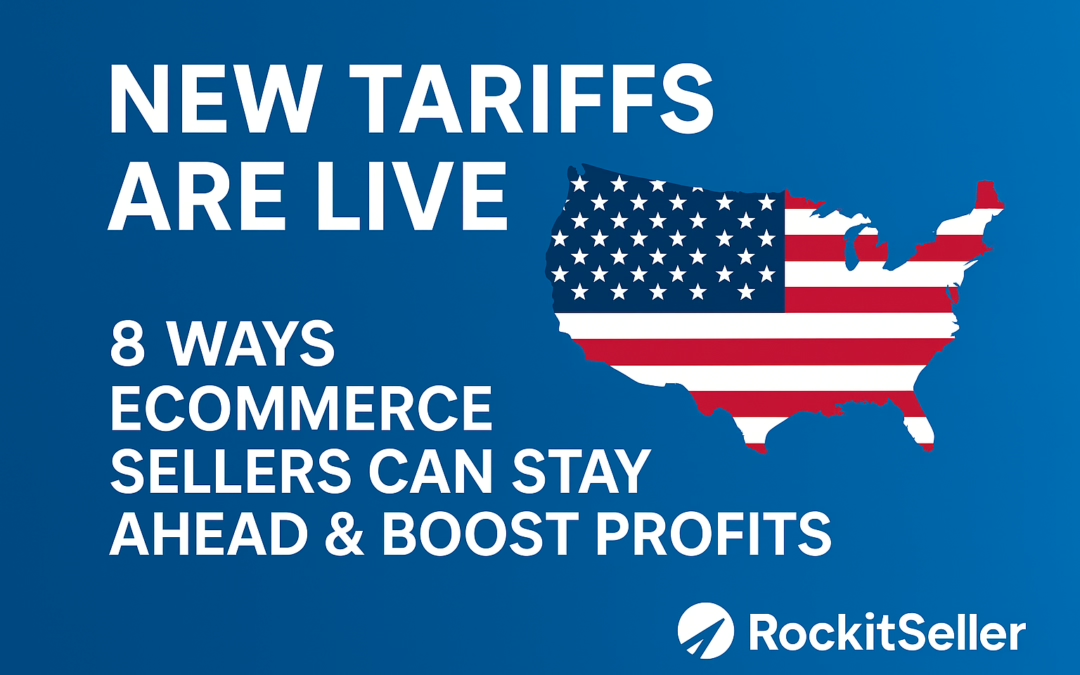Trump Tariffs Go Live this Week – What Should eCommerce Businesses Do?
With new Trump-era tariffs taking effect in just a week, online sellers face a looming spike in costs – especially for goods sourced from China and other targeted regions. But while some businesses may scramble, smart eCommerce sellers have a chance to pivot, protect margins, and even come out ahead.
At RockitSeller, we help Amazon FBA-first sellers manage complexity across multiple platforms. Here are 8 strategic moves you can make right now to turn the upcoming tariff shake-up into an advantage.
1. Diversify Your Supply Chain, and FAST!
Procrastination is the thief of time. Don’t wait!. Start researching alternative suppliers in tariff-free countries like Vietnam, Mexico, or India. Even shifting part of your sourcing outside affected regions can help cushion the blow.
🔍 Pro Tip: Use tools like Alibaba filters, Jungle Scout’s Supplier Database, or RockitSeller’s preferred supplier network to identify new low-risk sourcing options.
2. Stock Up Before the Tariffs Hit
If you have high-performing SKUs affected by the tariffs, consider bringing in extra inventory now to lock in pre-tariff pricing. This buys you time to adapt. Your long term strategy should be go to #1 above.
⚠️ Heads-up: Don’t overextend—calculate turnover velocity and cash flow before committing.
3. Negotiate With Existing Suppliers
Your current supplier may be willing to share the cost burden. Ask about volume discounts, cost-sharing, or even tariff-specific pricing adjustments. Larger retailers are already doing this—it’s worth asking.
4. Reprice Strategically, Not Desperately
Don’t blindly pass costs on to customers. Instead, look at where you can:
- Bundle products to increase perceived value
- Use free shipping thresholds to protect margins
- Offer limited-time deals to maintain volume
📦 RockitSeller’s dynamic pricing tool can help you stay profitable while staying competitive across Amazon, eBay, and Shopify.
5. Use AI to Optimize Everything
AI isn’t just for Silicon Valley—it’s now table stakes for serious sellers. Use predictive analytics to:
- Forecast demand under new pricing
- Avoid overstocking
- Find hidden profit opportunities
💡 Bonus: With RockitSeller’s integration into Adstein, you can optimize PPC spend in real time—essential when your product costs are changing.
6. Try Tariff Engineering
It sounds technical, but it’s simple: minor product or packaging changes can sometimes help you qualify for lower tariff brackets.
🧠 Work with your 3PL or freight forwarder to explore HTS code alternatives that still describe your product truthfully but attract lower duties.
7. Explore Domestic Manufacturing
You say what?! Yes, you heard that right. It’s not right for every seller, however U.S.-based production or final assembly can eliminate tariffs altogether. This strategy is gaining traction in apparel, consumer electronics, and supplements.
Bonus: “Made in USA” has strong marketing appeal – especially in a political climate favoring domestic goods. Go get them “patriot dollars”!
8. Stay Informed and Agile
This isn’t the last policy change you’ll face. Join trade associations, subscribe to tariff updates, and most importantly, keep your tech stack nimble.
👀 RockitSeller’s unified dashboard gives you cross-platform visibility so you can pivot instantly when market conditions change.
Final Thoughts
The upcoming tariffs aren’t just a challenge rather an opportunity. Sellers who stay informed, act fast, and adapt smartly can use this shake-up to outmaneuver slower-moving competitors.
If you’re selling on Amazon and beyond, and need a system that helps you respond to market volatility (like this), RockitSeller is built for this moment.

